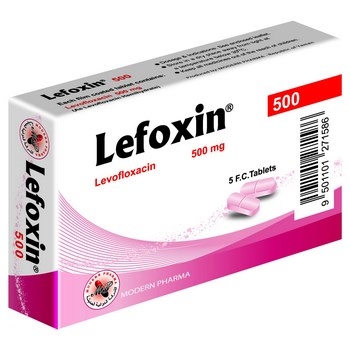Lefoxin 500.
oral administration.
Levofloxacin is rapidlyl absorbed . The absolute bioavailability is approximately
100% . Food has little effect on the absorption of Levofloxacin . Levofloxacin is
approximately 30 - 40% bound to serum proteins. Steady state is achieved within 3
days .
- Levofloxacin penetration into bone tissues, blister fluid, and lung tissue is good but
is poor into cerebra-spinal fluid .
- Levofloxacin is metabolised to a very small extent, the two metabolites account
for 5% of dose excreted in urine .
- Levofloxacin is eliminated relatively slowly from the plasma (t½ :6-8 h).
Excretion is primarily by renal route( >85% of the administerated dose) .


